Shampoo vs Soap
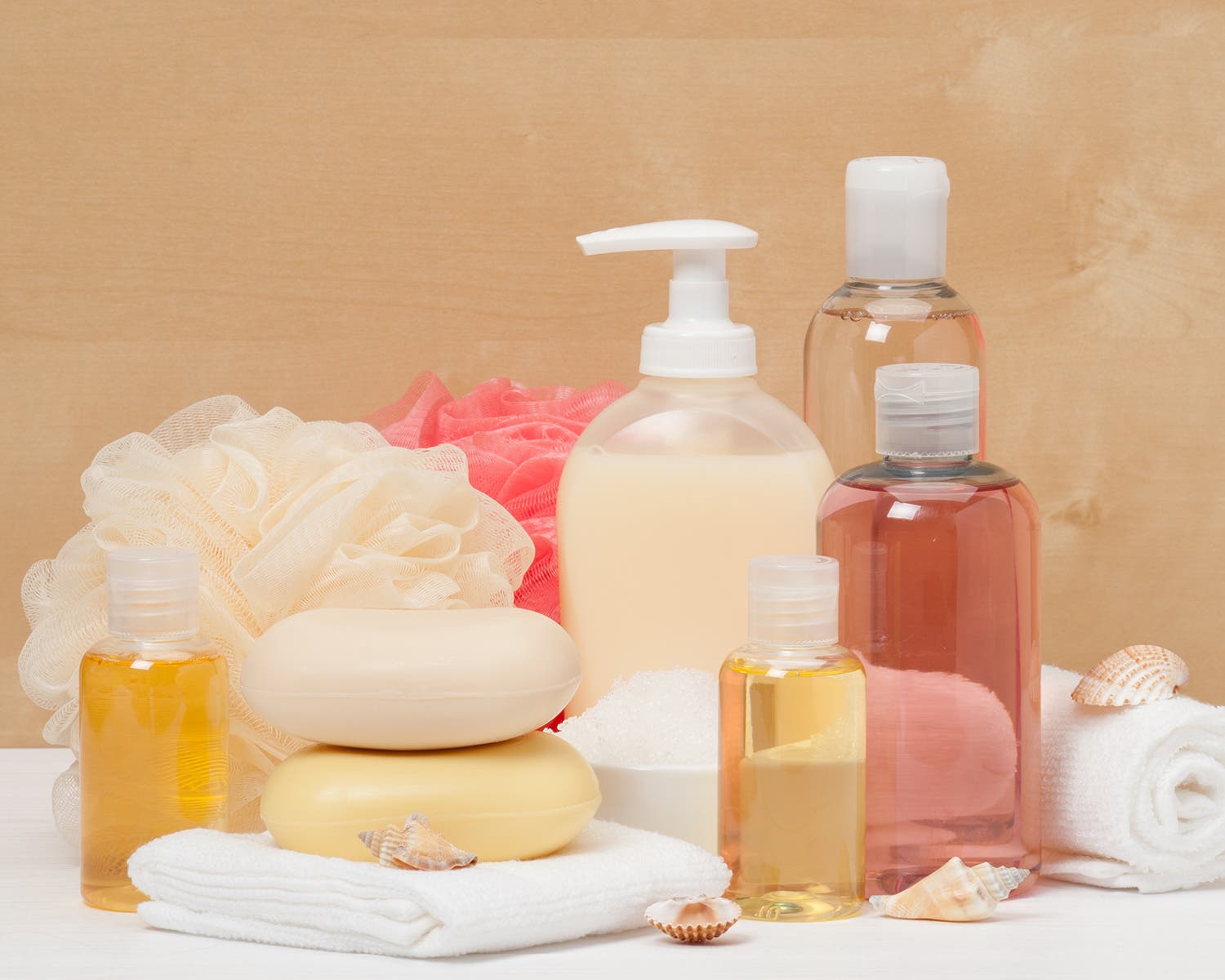
These days, with shampoo bars that look just like bars of soap and foaming soaps that remind you of shampoo, it’s easy to wonder whether or not soap and shampoo are really that different. Both come in liquid or bar form. Both can be scented or unscented, colored or clear.
And both are designed to wash skin and hair – shampoo cleans your scalp and hair while soap cleans your hands/body and all of the tiny (or not so tiny) hairs that cover your skin. So, are they really all that different? You’re probably wondering what the difference is between shampoo and soap?
The short answer is yes, they’re definitely is a difference between shampoo and soap. While most soaps and shampoos use sodium lauryl sulfate (SLS) to remove dirt and oil, just because they clean the same way doesn’t mean they are the same. Soaps and shampoos have different goals, therefore their formulas are, in fact, different. See our blog to learn more about what is Sodium Lauryl Sulfate and different types of sulfates and their effect on your hair health.
Shampoo Vs. Soap: The “Secret” Ingredient Sodium Lauryl Sulfate
Without getting too complicated, what you likely consider “soap” isn’t technically soap. Real soap is usually a very simple combination of animal or vegetable fat mixed with an alkaline solution (a combination of water-soluble salt and water). You can find alkaline solutions in nature, such as lye. In other words, real soap can be made without any artificial ingredients.
However, most soaps that we use today aren’t made naturally. They’re typically made with a surfactant (a detergent that increases water’s ability to spread and thoroughly wet something), like sodium lauryl sulfate (SLS), and a combination of other chemicals that make the product look good and smell nice. Technically what you’re using is a detergent, not a soap. If you’re still wondering, “What is detergent?”, read our blog to learn more.
Similar to these soap-like detergents, most shampoos use SLS to clean your hair. It’s what makes your shampoo lather or foam up when you rub it into your wet hair. It’s often the first or second ingredient in your shampoo.
SLS works the same way in soap and shampoo. One end of the molecule grabs on to the oil or dirt and the other end attaches itself to the water. As it’s rinsed away, the SLS takes the oil and dirt with it, “cleaning” your skin or hair.
How Shampoo Is Different From Soap
It may seem strange today, but until the mid 1930s, people actually used bar soap to clean their hair. But when liquid coconut oils became available, that all changed. The oil helped liquify soap, and eventually a liquid soap that could lather (a.k.a. shampoo) was created.
These days, bar soaps are not recommended for washing your hair. If you were to use bar soap instead of shampoo, it would leave a soap scum behind. And if you have hard water, it’d be very hard to rinse it off of your hair and your scalp.

As far as shower gel goes, it’s also not recommended for your hair. This is because of the percentage of surfactants in each – something you wouldn’t easily know by reading the bottle. In general, shampoo has a lower percentage of surfactants compared to shower gel. This allows it to easily rinse out of your hair. It also means that less oils are being pulled out of hair, which is important, as you’ll learn about below.
When it comes to hand washes, they also have a higher percentage of surfactants. And face wash, which is typically too expensive to use as a shampoo, usually has an additional series of ingredients designed to clean the face and help prevent acne.
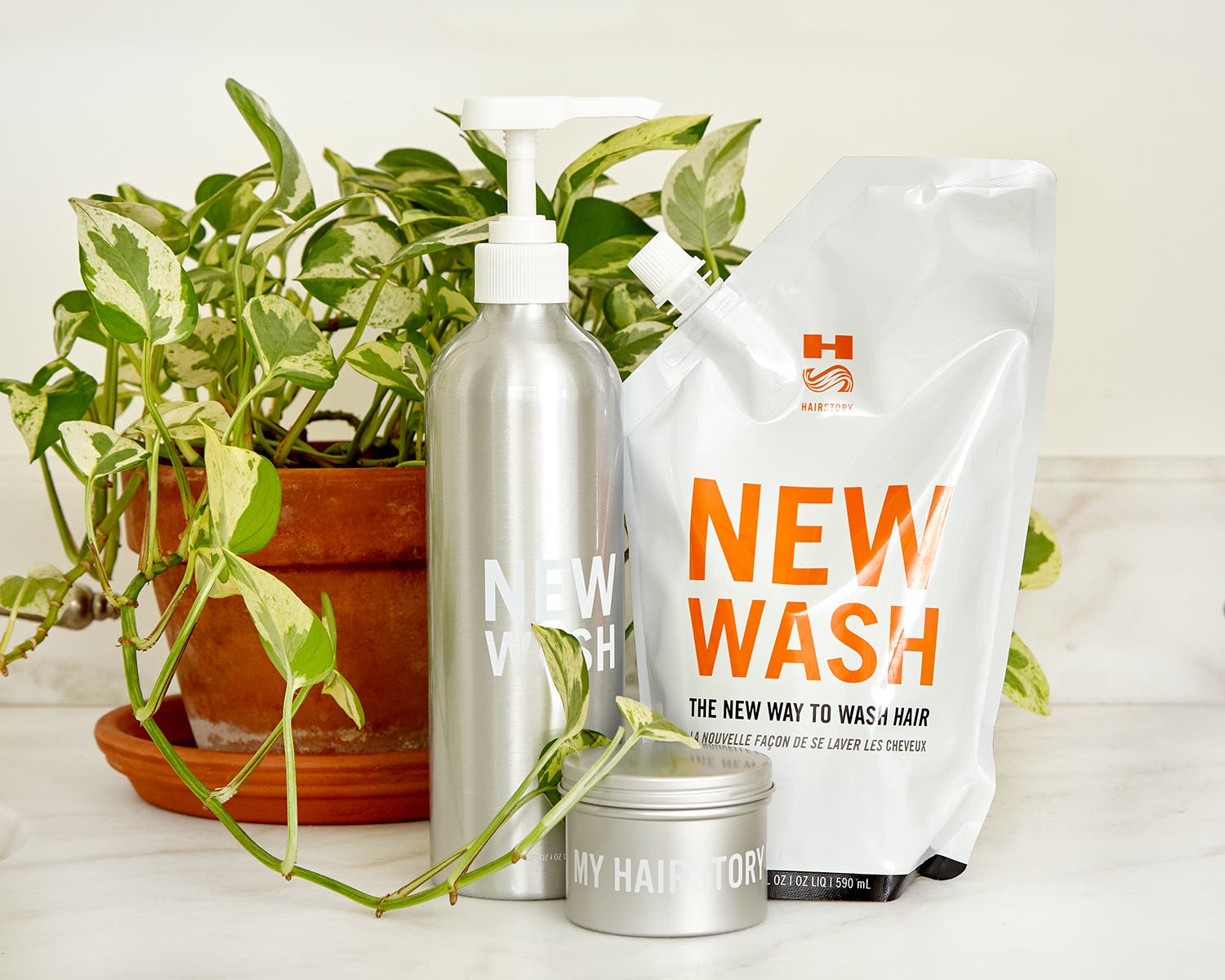
Why Is There Such a Difference Between Soap And Shampoo?
According to University of British Columbia chemistry professor Stephen McNeil, if your shampoo’s only job was to get rid of oil, then it would be the same as your hand soap. In an interview that McNeil gave to NPR, he explained that the detergent, or SLS, alone is too harsh for your hair.
You see, your hair and scalp produce a thin coating of oil to protect it. This oil also keeps your hair shiny and smooth. But, a detergent can’t tell the difference between the oil that’s building up in your hair and the natural oil needed for protection and shine. So, it gets rid of everything.
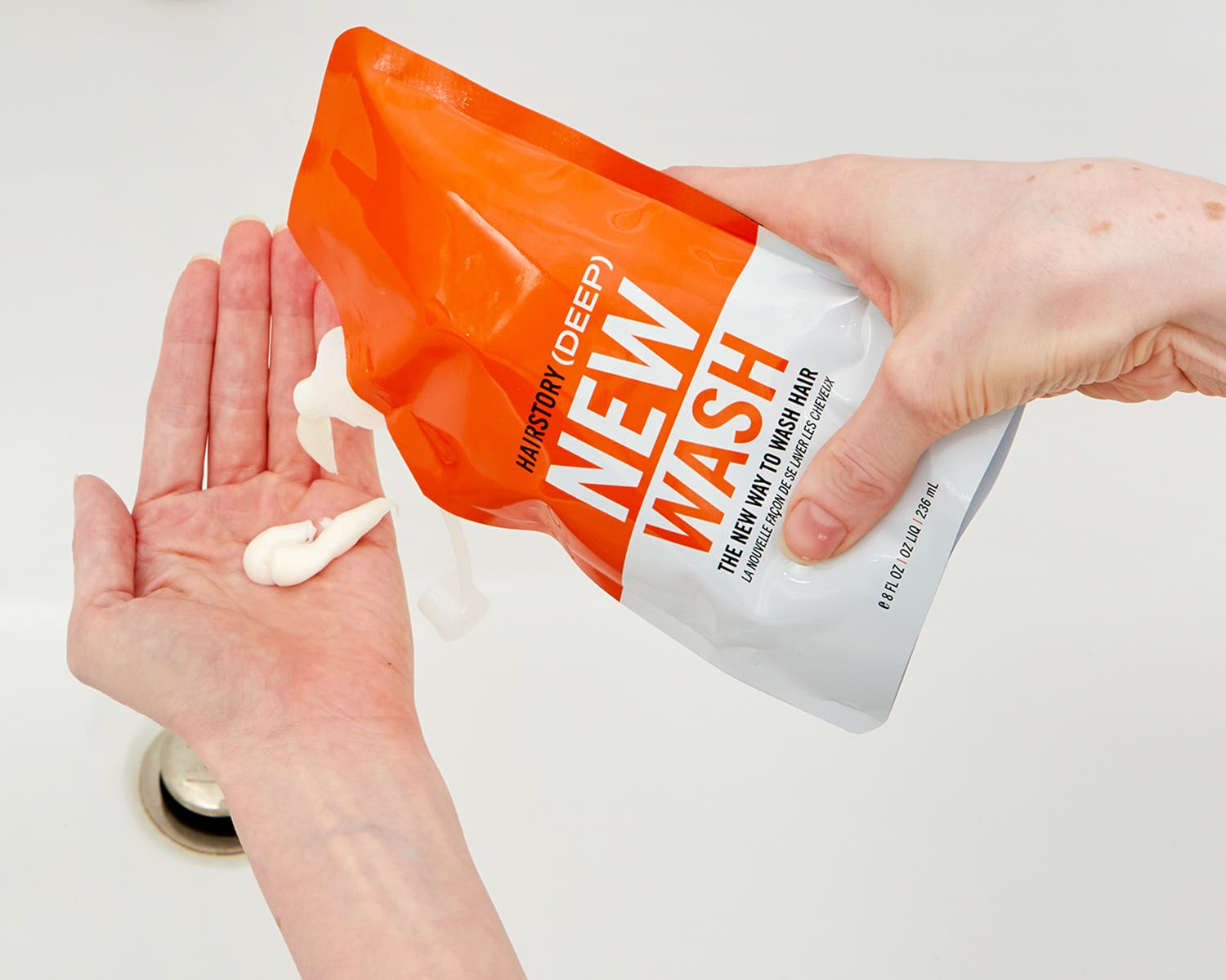
If you washed your hair with just soap, it would definitely remove all of the oil and dirt, but it would also leave your hair dull, dry, brittle, frizzy and hard to style.
Thus, commercial shampoos that use SLS to clean your hair must then repair the damage they’ve done. They do this by adding some sort of conditioner to their formula to give your hair some gloss, make it more manageable and reduce the frizz. While they could use vegetable or mineral oils to condition your hair, they can also use man-made chemicals. And unfortunately, for most people, the conditioning in shampoo isn’t enough to combat the harm of the SLS, so they also use a separate conditioner after.
What About Shampoo Bars?
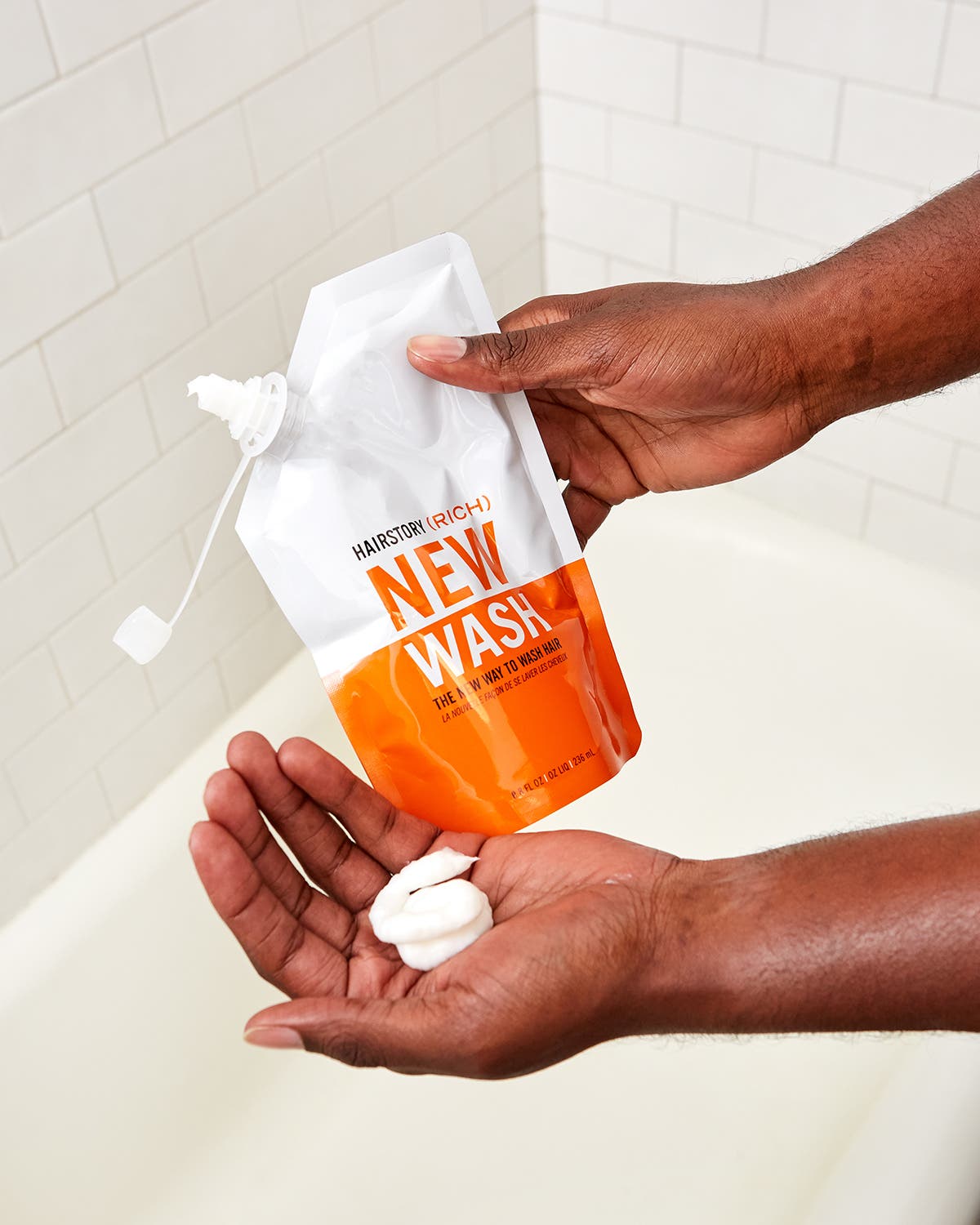
We know what you’re thinking, “they look like a bar of soap, so are they really that different from actual soap?” Or you’re thinking, “shampoo bars are so much better for the environment, they can’t be bad, right?” Well, let’s explain.
Many commercial shampoo bars still contain SLS, but brands often claim that even though the concentration is higher (similar to a bar of soap), it’s not as bad as a liquid shampoo because of how it’s used. They explain that since you’re only getting the “foam” off the top of a shampoo bar, you’re using much less shampoo than you would with a liquid. Therefore, there’s not as much SLS to strip away the oils.
However, there are also SLS-free shampoo bars that use products like coconut oil. This, of course, makes them very different than a bar of commercial soap.
If There are Natural Soaps, are There Natural Shampoos That Don't Contain SLS?
Yes, you can make your own natural shampoo or buy SLS-free shampoos, like our New Wash. There are tons of recipes online for making your own shampoo. These recipes are, of course, SLS-free. Some of the more common ingredients used are:
- Castile liquid soap
- Apple cider vinegar
- Coconut milk
- Eggs
- Avocado
- Scented herbs
- Essential oils
Or, you can purchase SLS-free products, like our New Wash. Even though our cleansing wash doesn’t contain SLS, your hair will still get clean. SLS-free products use milder cleansing agents that will help keep the moisture in your hair and on your scalp. Still wondering, “Is shampoo bad for your hair?”. Check out our blog to learn more about this topic.
Even better, an SLS-free wash can actually repair your hair, but it may take some time depending on the damage. Some people will feel a huge difference immediately, but for others, it may take time. If your hair is very damaged or your scalp is very irritated, it could take longer for you to notice a change.
Alternatively, if you have overactive oil glands, they may need some time to change the amount of oil they produce. Once everything is nicely balanced, your scalp and hair will be healthy and hydrated. You won’t even need conditioner.
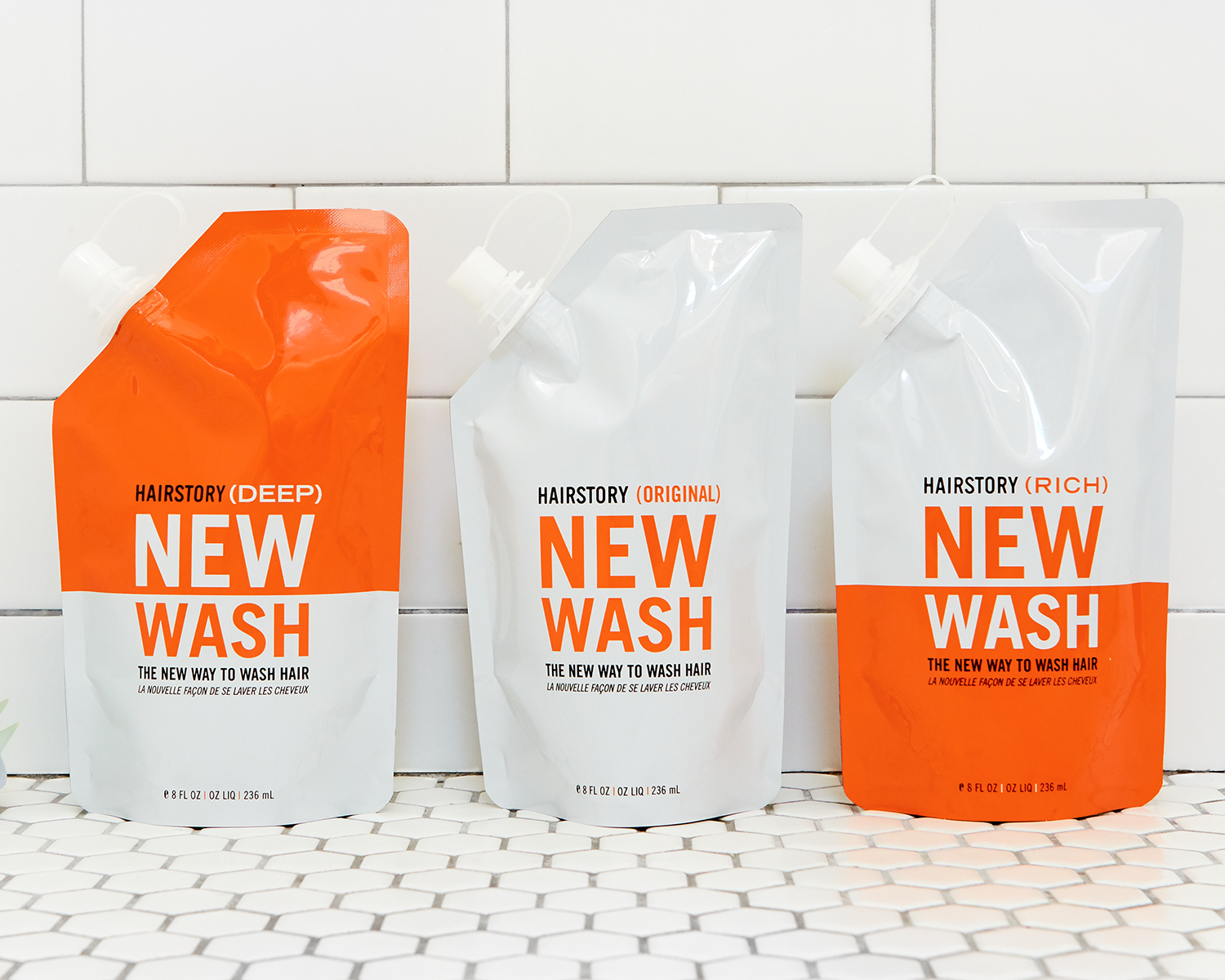
Can I Ever Use Soap Instead of Shampoo or Vice Versa?
In general, unless you’re using “real soap” made from animal or vegetable fat mixed with an alkaline solution, using soap on your hair will pull out even more oils than an SLS-filled shampoo, and it won’t provide any conditioning. But, in a pinch, you could use shampoo on your body. However, you may need to scrub a bit harder or longer to remove all of the oils and dirt.
While most commercial shampoos and soaps are really various combinations of detergents designed to lift all oil and dirt from whatever they touch, they still have several different properties that make shampoo better for your hair. But the best way to treat your hair is to avoid all products with SLS, whether it’s a soap or a shampoo, and wash your hair with a formula that doesn’t strip those protective oils while conditioning your hair in the process, such as our detergent free shampoo. This creamy cleanser contains essential oils and naturally derived ingredients that clean without stripping your scalp of its protective barrier.
Sources:
Britannica, The Editors of Encyclopaedia. "Surfactant". Encyclopedia Britannica, 11 Feb. 2020, URL.
Come clean: What's the difference between shampoo and shower gel? New Scientist. URL.
Are All Soaps Created Equal?. NPR. URL.
Carolei, Luciano, and Ivano G R Gutz. “Simultaneous determination of three surfactants and water in shampoo and liquid soap by ATR-FTIR.” Talanta vol. 66,1 (2005): 118-24. doi:10.1016/j.talanta.2004.10.005
How Is Shampoo Different Than Soap?. Wonderopolis. URL.
Saponification: The preparation of Soap. Milczanowski.. URL.
Curiosities: What’s the difference between dishwasher detergent, laundry detergent and dish soap? Why aren’t they interchangeable?. University of Wisconsin-Madison. Source. URL.
Soap: Clean for the Environment or Just Us?. Yale National Initiative. URL.
Draelos, Zoe D. “Essentials of Hair Care often Neglected: Hair Cleansing.” International journal of trichology vol. 2,1 (2010): 24-9. doi:10.4103/0974-7753.66909
All About SLS. Lush. URL.
5 Homemade Shampoo Recipes That *Actually* Clean Your Hair. Cosmopolitan. URL.
I Tried Washing My Hair With 4 Different Homemade Shampoos—Here's What Happened. Prevention. URL.



